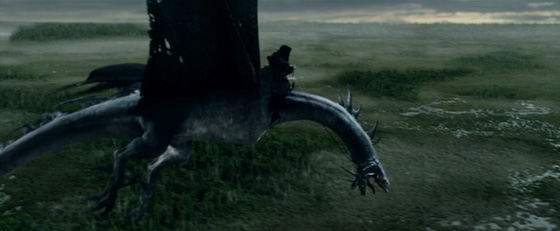
And now for something completely non clam-related…a speculative essay about LOTR as an environmental allegory, drawing on my posts to social media last week that clearly struck a nerve.
I’m the first to admit that Sauron’s rule of Mordor was highly problematic. But frankly, I think those concerns, focusing largely on his foreign policy, have been discussed ad nauseam, and not enough attention has been paid to his legacy as a steward of the environment. Plentiful examples exist of Sauron’s all-seeing eye for conservation. One need look no further than the Dead Marshes. These scenic lands were a well-maintained string bog which represented one of the environmental gems of Mordor, and were maintained as a protected reserve where orcish patrols did not enter. The marshes were an innovative nature-based solution to the environmental challenge of the thousands of corpses left over after the Battle of Dagorlad. The Dark Lord in his wisdom allowed the wetlands to expand to mediate the damage left over and return those nutrients to the ecosystem.
The marshes hosted diverse populations of anaerobic bacteria which helped preserve the famed bog bodies of the area, leading to them being an important archaeological site. The microbes produced a small amount of natural methane, and while this reduced the ability of the marsh to sequester carbon from Mordorian industry, the resulting little candles were a major attraction for visiting ecotourists.

Some may argue that the marshes were not part of Mordor proper, which is true in the strict sense, but the marshes were clearly part of Sauron’s zone of influence, especially considering the extensive Ring Wraith aerial monitoring surveys he sent to survey the environmental health of the region and keep out interlopers of all sizes. Other critics pointed to a lack of crunchable birdses, but visitors approaching in early March are unlikely to observe many waterfowl, considering most would have migrated north by then to sites like Long Lake near the Lonely Mountain.
Sauron also contributed to forest reserves such as Mirkwood Old Growth Forest Biodiversity Reserve. While neurotoxins causing amnesia were present in some waterways, these were likely produced by harmful algal blooms resulting from Elvish untreated sewage. Mirkwood was home to a rich ecosystem supporting a vibrant population of endemic colonial spiders, Ungoliantus shelobii, which remain understudied. A small remnant spider population was also present in Cirith Ungol, supported by a locally administered feeding program. Unfortunately, that population was subject to poaching by an invading hobbit force during the War of the Ring.
Sauron’s detractors will point to environmental failures such as his alliance with Isengard, which reportedly resulted in some amount of deforestation. Saruman was previously an ally to Entish concerns, but necessities of the war effort resulted in previous protections being lifted, as is often the case in times of combat. While Sauron did attempt to encourage Saruman’s use of hydropower instead of biomass burning, Uruk-hai production was admittedly not as sustainable as it could have been. A full lifecycle carbon analysis was never conducted of their production processes, which were shrouded in secrecy, but they did represent a type of recycling.
Meanwhile, attempts to blame Sauron for the destruction of the Brown Lands have been undermined by a lack of primary sources, aside from Gondorian propaganda. The Entwives, the only known witnesses, did not respond to requests for comment for this report. Overall, it is clear that Sauron’s mixed legacy in foreign policy is improved somewhat when looking at his environmental record. One does not simply dismiss his environmental management ability.
